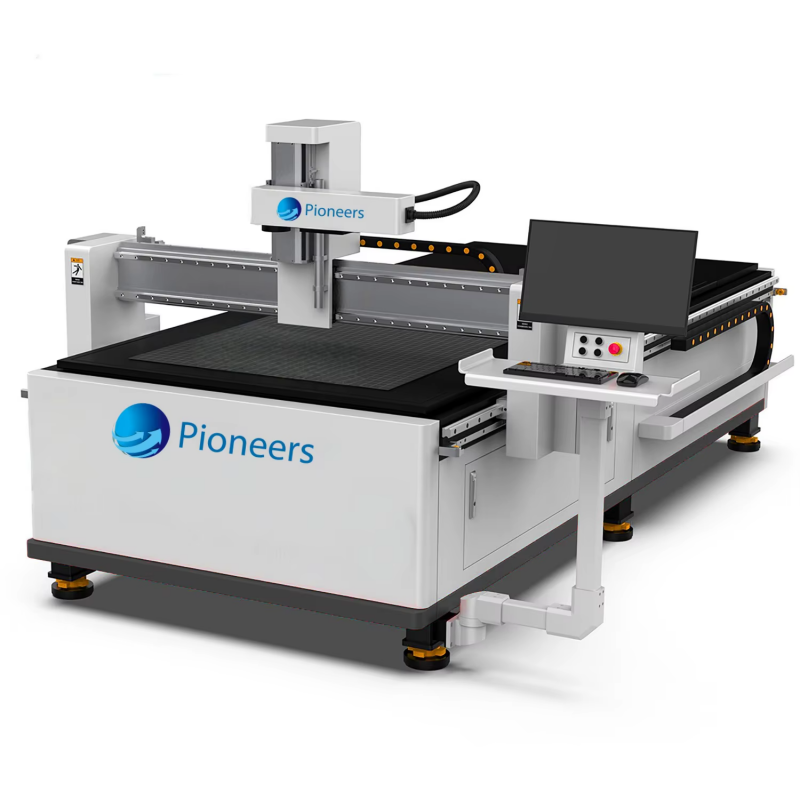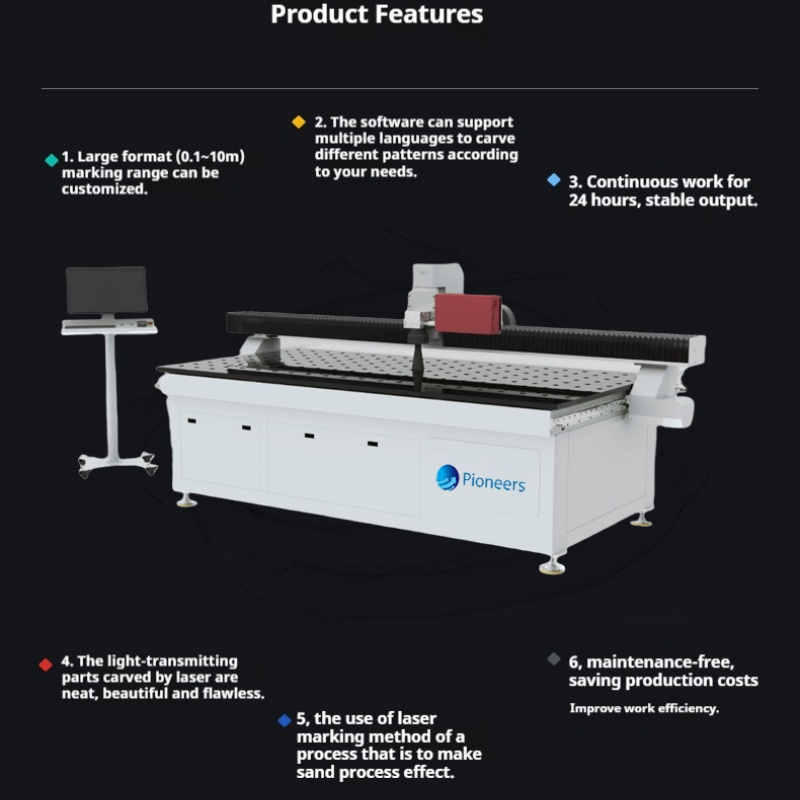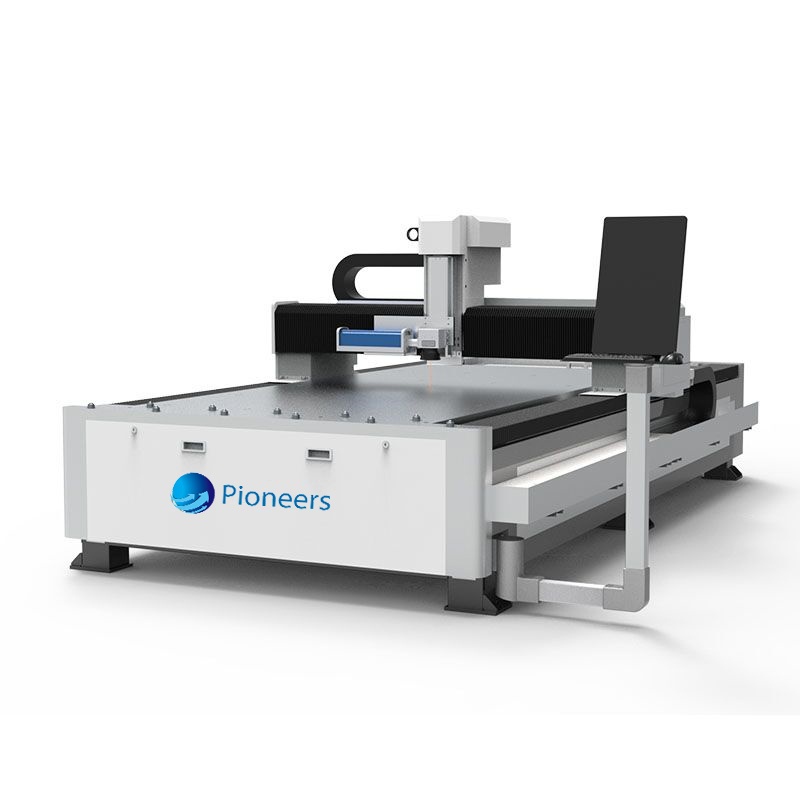In the field of surface treatment, laser sandblasting machines, with their precision, efficiency, and environmental friendliness, are gradually replacing traditional sandblasting equipment and becoming a core tool for surface processing of materials such as metal, plastic, and stone. Their exceptional performance is supported by the collaborative efforts of four core technology modules: laser light source technology, optical transmission and focusing technology, motion control systems, and dust removal and heat dissipation systems. A thorough analysis of these technologies not only helps us understand the operating principles of laser sandblasting machines but also helps us grasp the direction of their technological evolution.
Laser Light Source: The “Heart” of Energy Output
The laser light source is the energy core of a laser sandblasting machine, and its performance directly determines processing accuracy, efficiency, and applicable material range. Currently, mainstream laser sandblasting machines use two types of light sources: fiber lasers and CO₂ lasers. Fiber lasers, with their wavelengths typically at 1064nm, offer highly concentrated energy, making them particularly advantageous in metal surface treatment applications such as stainless steel rust removal and aluminum alloy profile marking. They can achieve micron-level energy density control to prevent material overheating and deformation. Taking a 20W fiber laser sandblaster as an example, its spot diameter can reach as small as 0.01mm, enabling fine engraving on metal nameplates at a processing speed 3-5 times faster than traditional sandblasting.
CO₂ lasers, with a wavelength of 10.6μm, are particularly well-suited for non-metallic material processing, such as deburring plastic parts, texturing wood surfaces, and engraving ceramic patterns. These lasers generate laser light through gas discharge, resulting in stable energy output and a higher absorption rate for non-metallic materials, enabling rapid removal of surface impurities without damaging the substrate. For example, in the processing of plastic casings for consumer electronics products, CO₂ laser sandblasters can precisely remove minute burrs after injection molding, achieving a yield rate exceeding 99%, far exceeding manual efficiency. Furthermore, pulse mode control technology for the laser light source is crucial. By adjusting the pulse width (nanosecond to millisecond) and repetition rate, it is possible to switch between “fine engraving” and “fast sandblasting” modes to meet diverse processing needs. Optical Path System: The “Context” of Precise Transmission
The optical path system is responsible for transmitting and focusing laser energy, a critical step in ensuring machining accuracy. It primarily consists of three components: optical fiber, reflectors, and focusing lenses. As a transmission medium, optical fiber must possess low loss and high interference immunity. Currently, quartz fiber is the mainstream choice, boasting a transmission efficiency exceeding 95%, effectively reducing laser energy attenuation during transmission. Reflectors, coated with high-reflectivity coatings (such as gold or silver), redirect laser light. Combined with a multi-axis adjustment mechanism, this allows for flexible three-dimensional laser steering, meeting the demands of comprehensive machining of complex workpieces.

The focusing lens is the core of the optical path system, converging the parallel laser beam into an extremely small spot and increasing energy density. Commonly used focusing lenses utilize a plano-convex lens design, typically made of ZnSe (suitable for CO₂ lasers) or quartz (suitable for fiber lasers). Precision optical polishing ensures the roundness and uniformity of the focused spot. For example, a fiber laser sandblaster, when equipped with an F-Theta focusing lens, can achieve a focusing accuracy of ±0.02mm within a 100mm x 100mm processing area, ensuring consistent processing even on large surfaces. Furthermore, the application of dynamic focusing technology further overcomes the limitations of fixed focus. By using a motor-driven focusing lens to adjust the focal length in real time, it enables precise sandblasting of curved and irregularly shaped workpieces, such as patterning on the surface of an automotive wheel hub, addressing the difficulty of traditional fixed focus systems in processing curved surfaces.
Motion Control System: The “Brain” of Precise Positioning
The motion control system is the “brain” of the laser sandblaster, coordinating laser output with workpiece motion to achieve precise processing of complex paths. This system primarily consists of a motion controller, servo motors, and guide rails. Its core capabilities are high-precision positioning and trajectory planning. Currently, mainstream motion controllers use PLCs or industrial-grade microcontrollers, supporting G-code and CAD drawing import, converting design patterns into laser processing paths with positioning accuracy reaching ±0.01mm. The servo motor uses closed-loop control technology to provide real-time feedback on motor speed and position, ensuring that the workpiece’s motion speed is synchronized with the laser output rhythm, thus preventing misalignment.
In practical applications, the multi-axis linkage technology of the motion control system is particularly critical. For example, when sandblasting a metal mold, the linkage of the X, Y, and Z axes, combined with the rotary axis, enables full-scale processing of both the interior and exterior surfaces, eliminating the need for multiple clamping operations and significantly improving efficiency. Furthermore, the motion control system integrates an autofocus function. Using a laser displacement sensor to measure the workpiece’s surface height in real time, it automatically adjusts the focusing lens position to accommodate uneven surfaces and ensure consistent processing depth. This function is particularly important when engraving irregular stone surfaces.
Auxiliary Systems: The “Guarantee” of Stable Operation
The stable operation of a laser sandblaster depends on two auxiliary systems: dust removal and heat dissipation. The dust removal system collects dust and debris generated during processing to prevent environmental pollution and equipment damage. It primarily consists of a dust hood, filter element, and blower. The high-efficiency dust removal system utilizes a negative pressure dust collection design. The dust hood is positioned close to the processing area, achieving a dust collection rate exceeding 98%. Combined with a HEPA filter, it can filter particles larger than 0.3μm, meeting environmental requirements. In metal rust removal applications, the dust removal system effectively collects iron oxide dust, preventing operators from inhaling it. It also prevents dust from adhering to optical surfaces and affecting laser transmission efficiency.

The cooling system controls the temperature of the laser light source and electrical components to prevent overheating, which can lead to performance degradation or damage. Laser light sources generate significant heat during operation. Fiber lasers typically use water cooling, dissipating heat through circulating water, achieving a temperature control accuracy of ±1°C. CO₂ lasers use a combination of air and water cooling to ensure stable discharge tube temperature. Electrical components such as motion controllers and servo drives are cooled by fans and heat sinks. Temperature sensors monitor the temperature in real time, automatically alarming and reducing power when the temperature exceeds the threshold, ensuring safe operation. In high-power laser sandblasting machines (e.g., above 100W), the performance of the heat dissipation system directly determines the machine’s continuous operating time. A high-quality heat dissipation system can support 24-hour continuous operation, meeting the demands of mass production.
From laser light source energy regulation to precise optical transmission, from motion control system trajectory planning to auxiliary system stability assurance, four core technology modules together constitute the technical core of laser sandblasting machines. With the continuous advancement of laser technology, future laser sandblasting machines will develop towards higher precision (sub-micron level), higher efficiency (power level of 10,000 watts), and greater intelligence (AI-powered automatic parameter adjustment). This will further expand the application boundaries in high-end manufacturing, cultural and creative design, medical equipment, and other fields, bringing more innovation to the surface treatment industry.
Lorem ipsum dolor sit amet, consectetur adipiscing elit. Ut elit tellus, luctus nec ullamcorper mattis, pulvinar dapibus leo.



